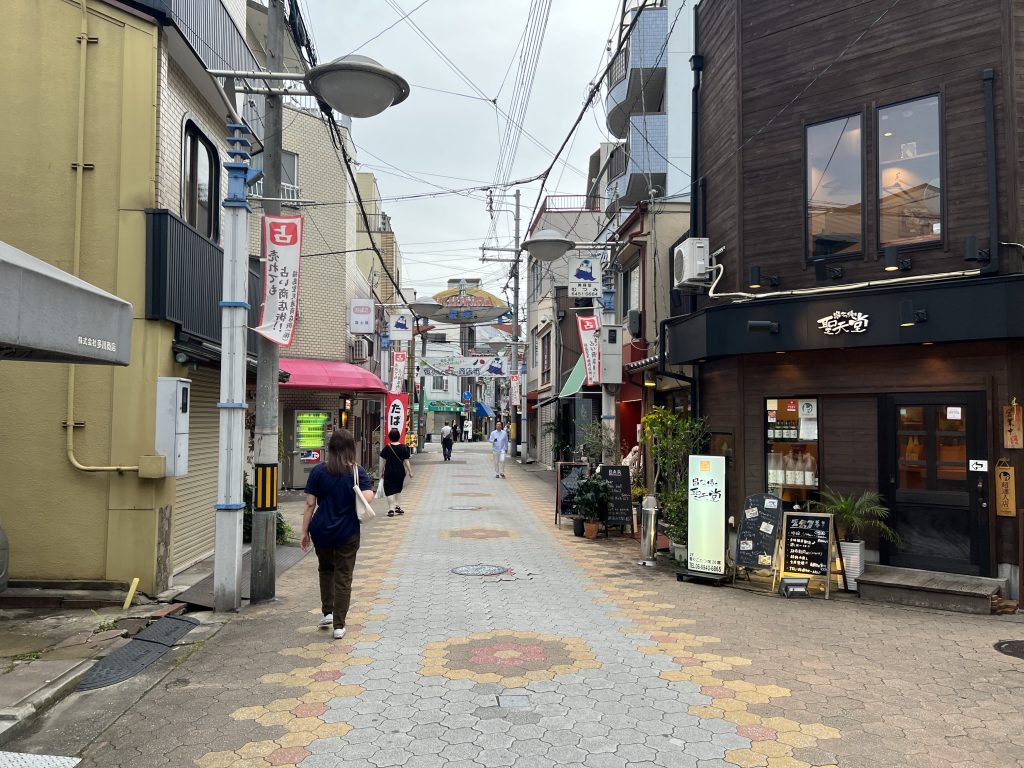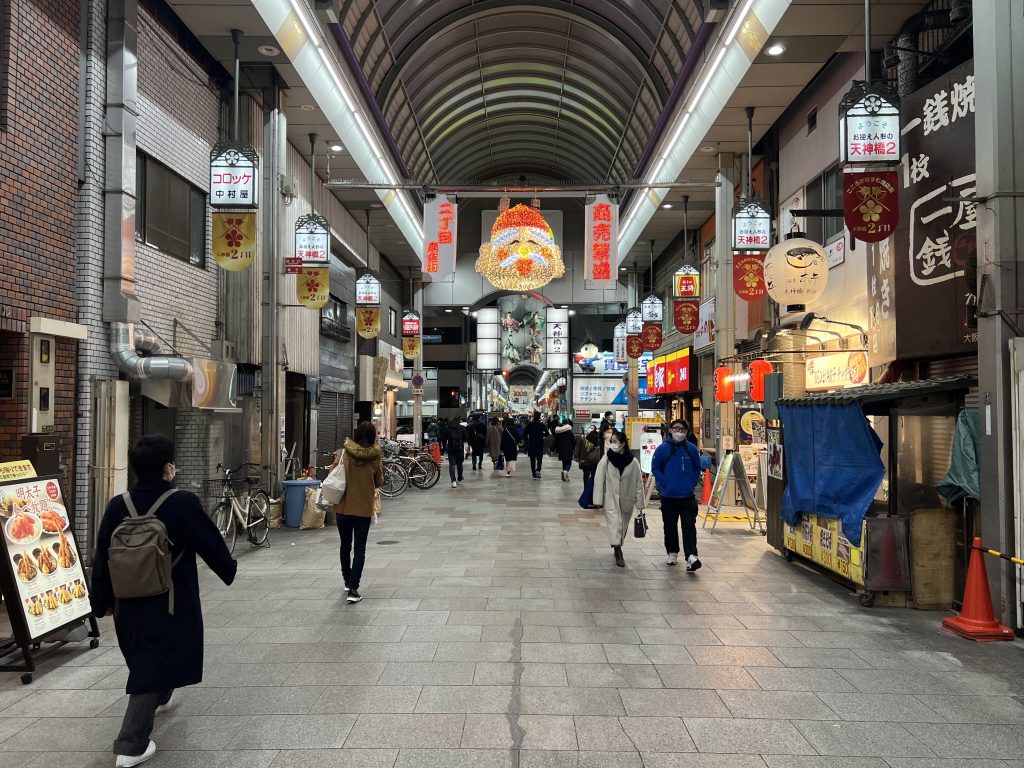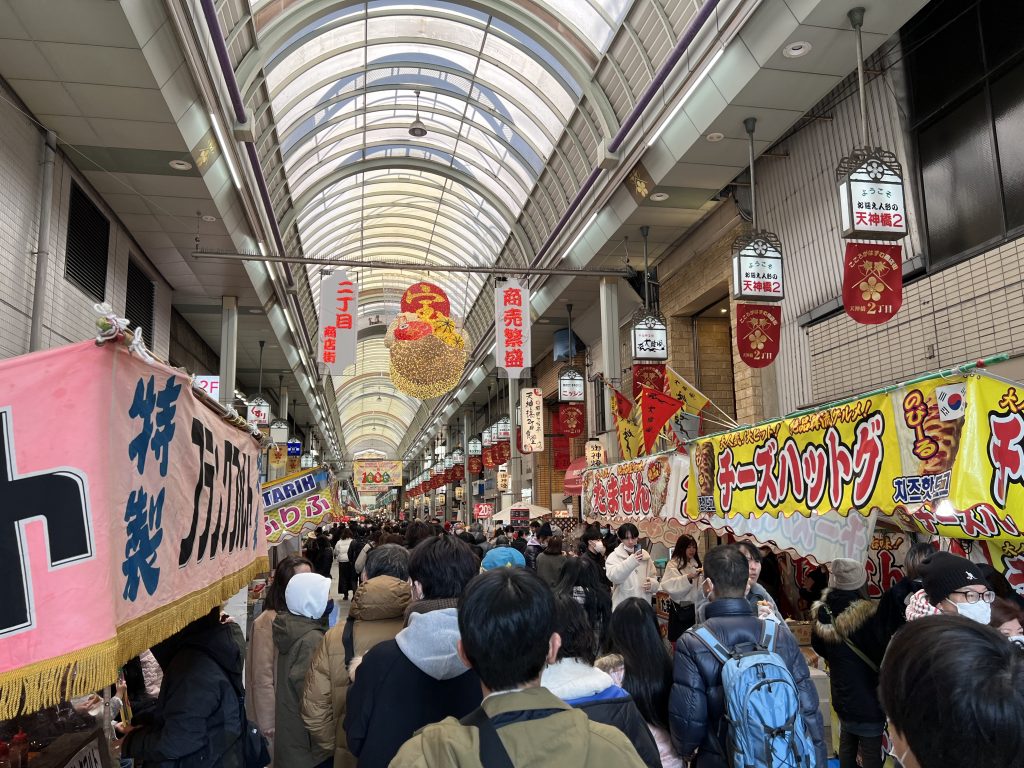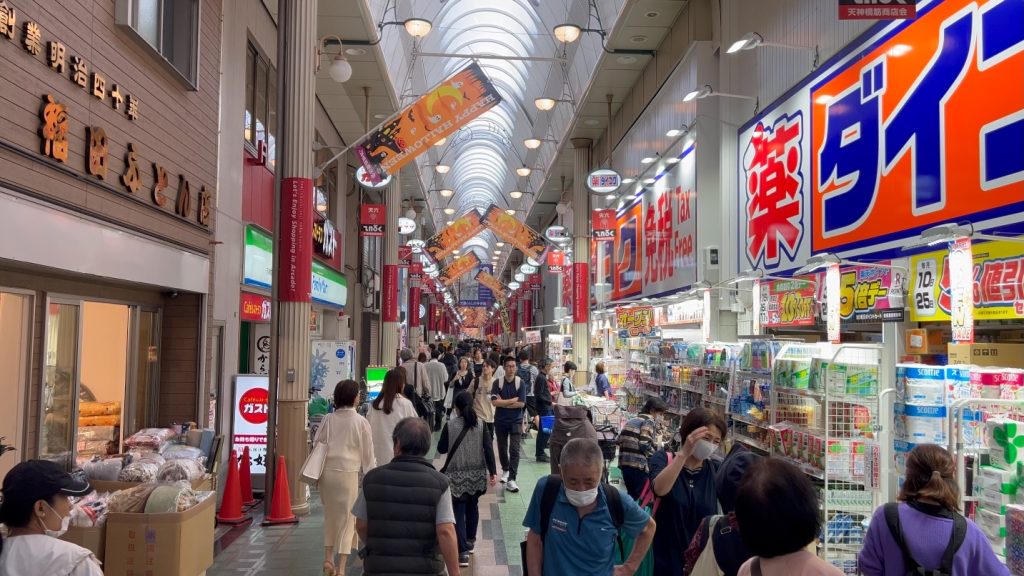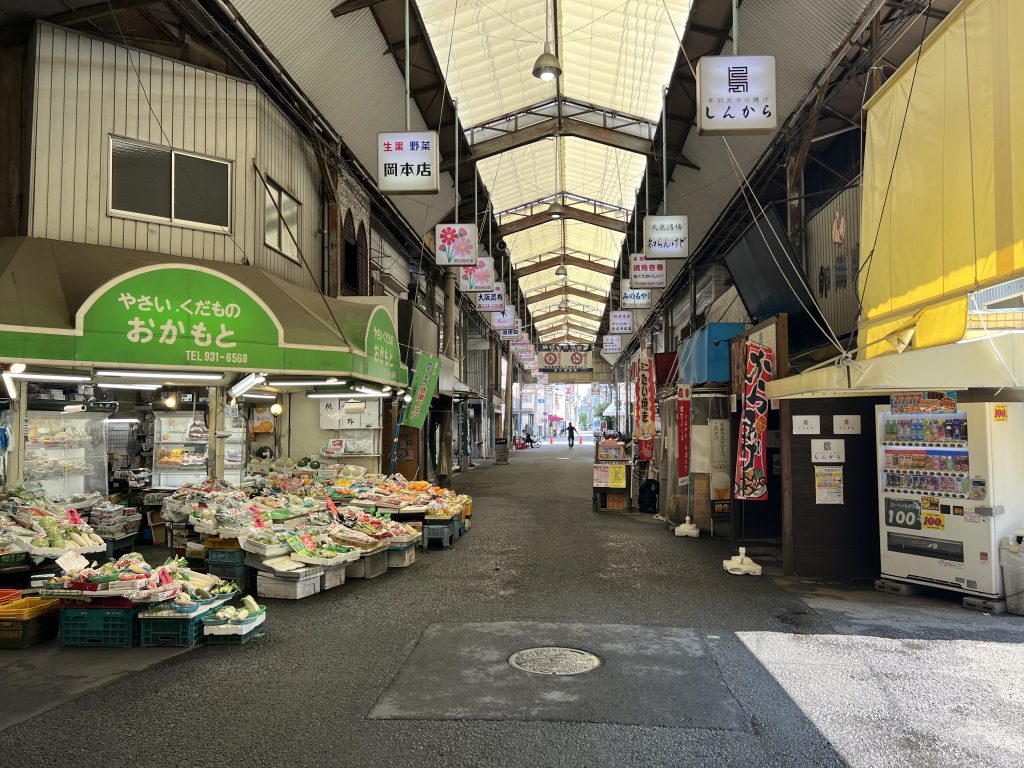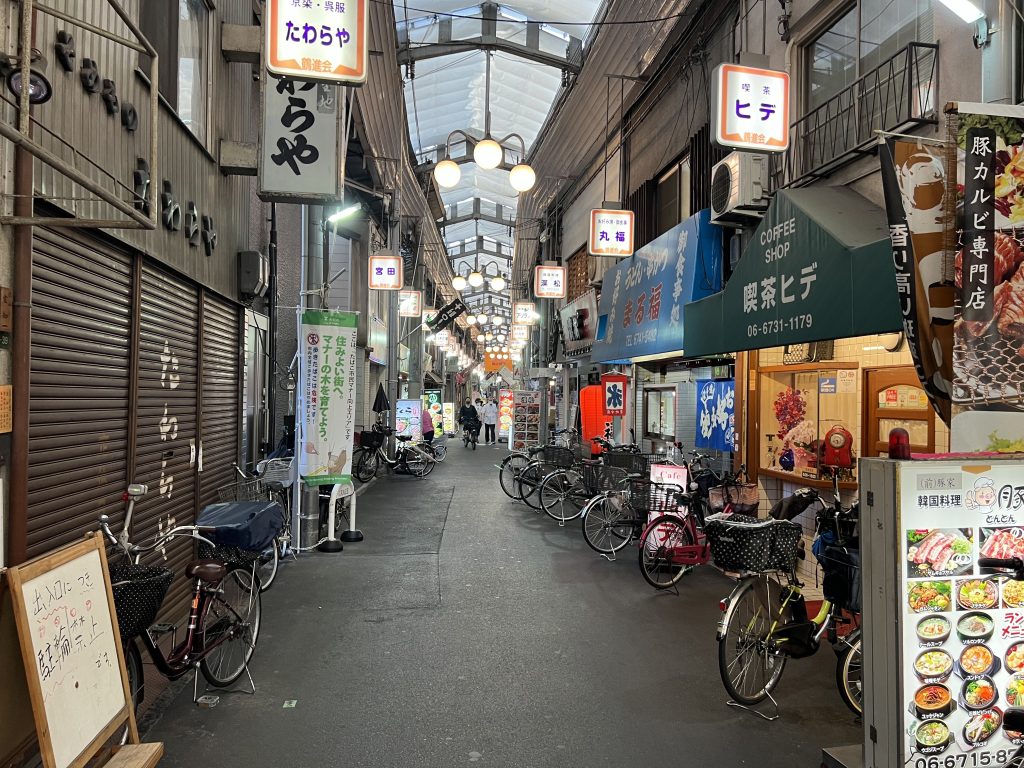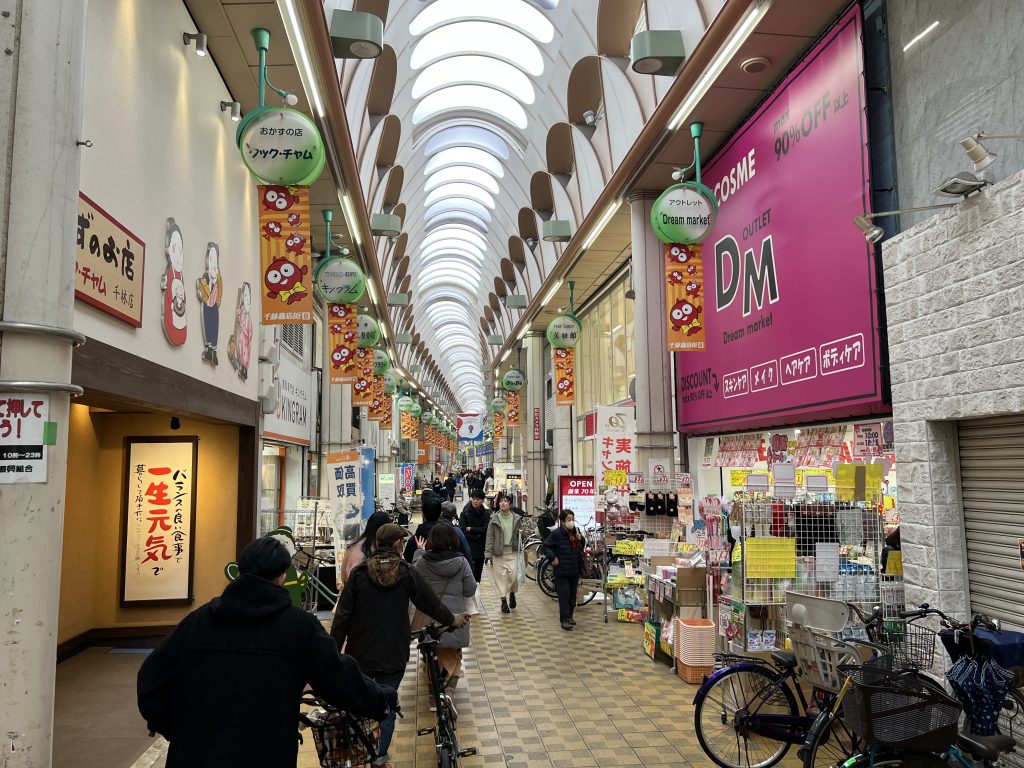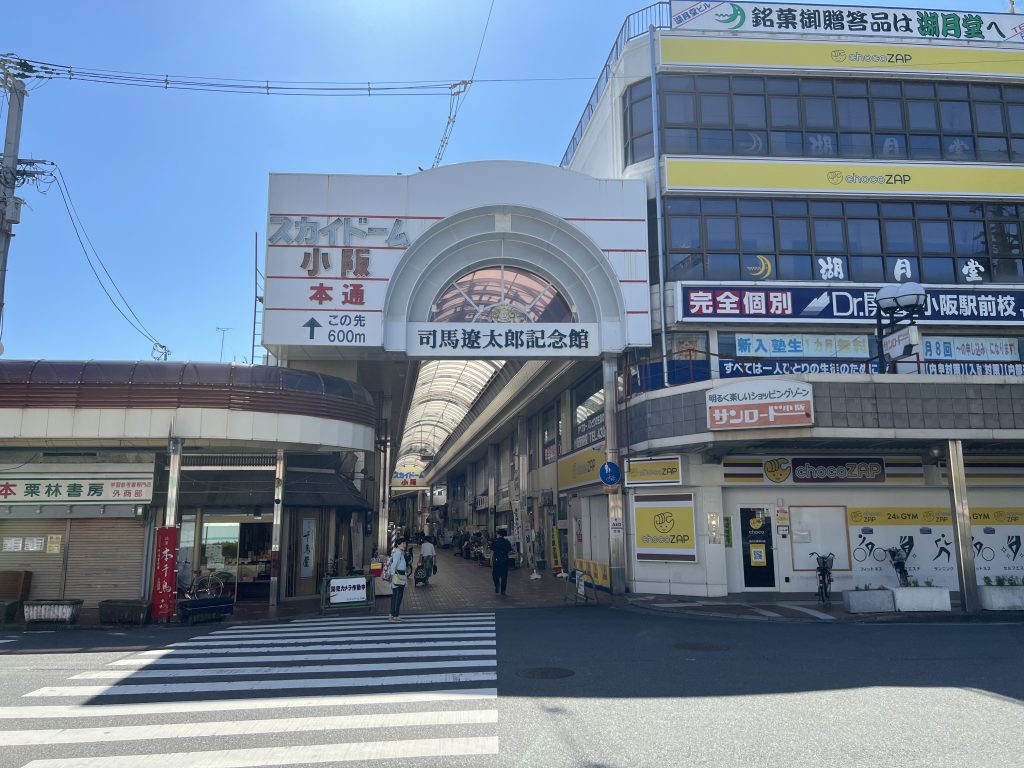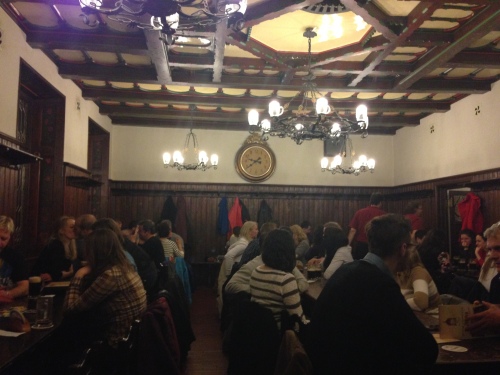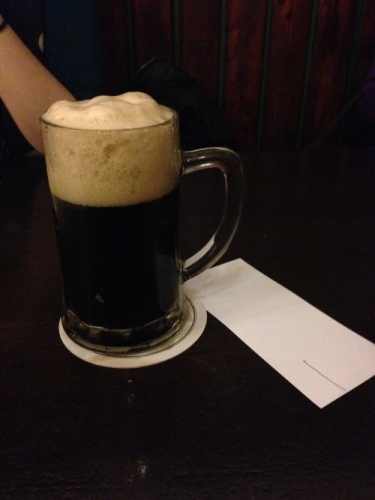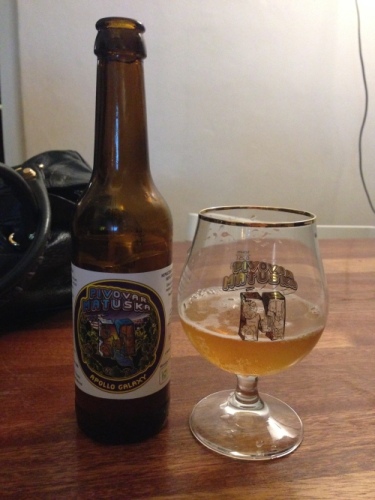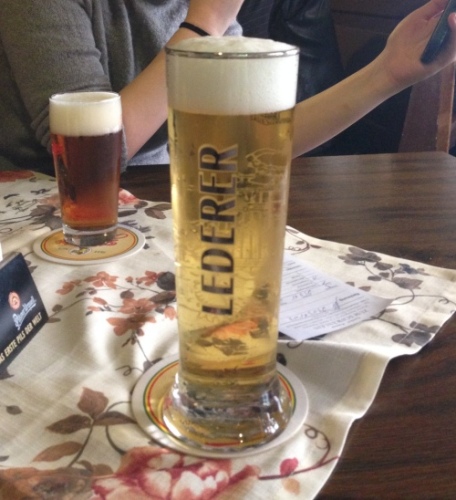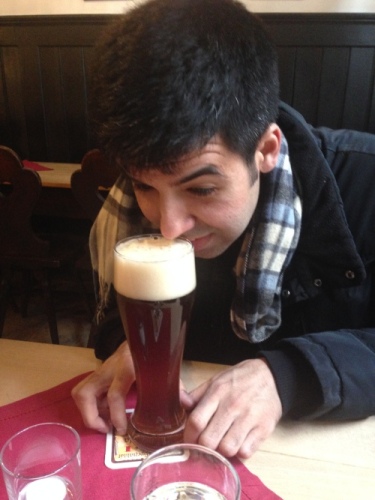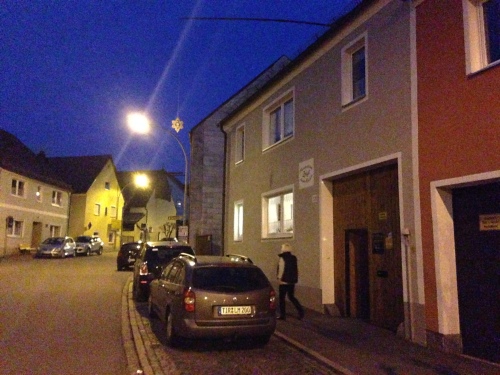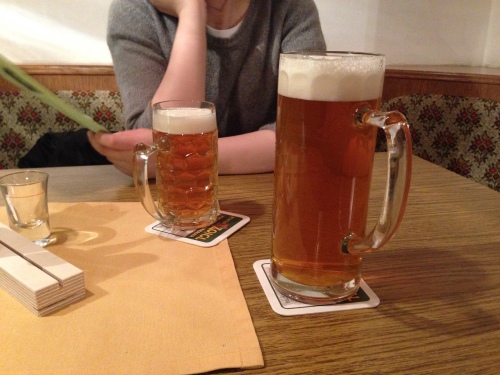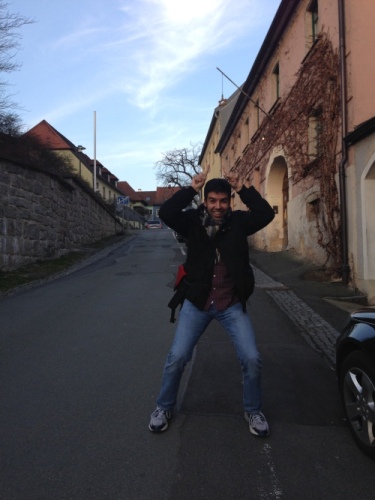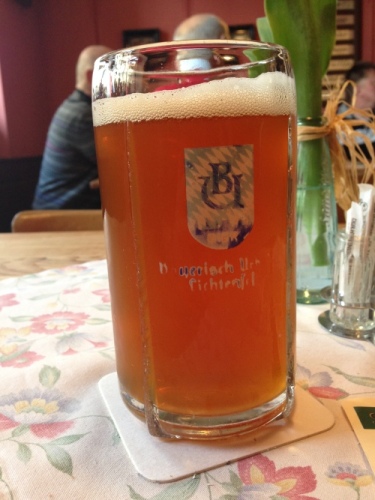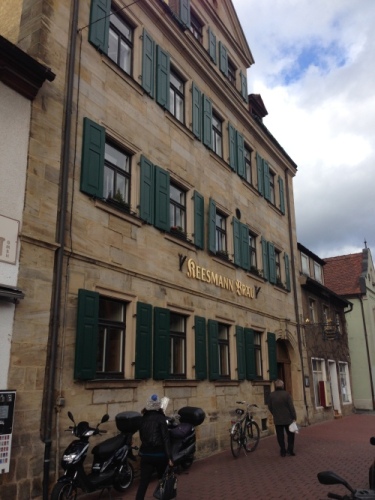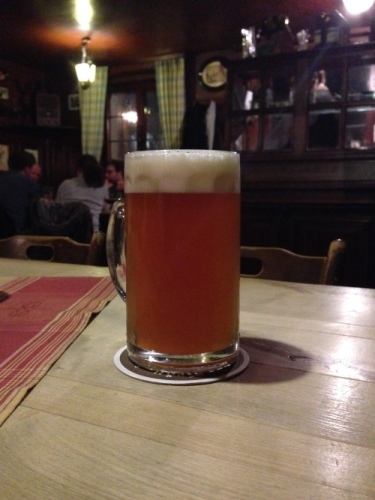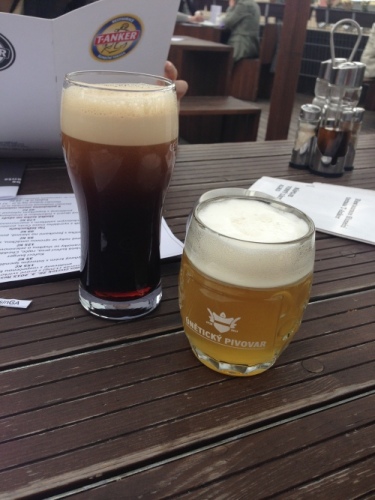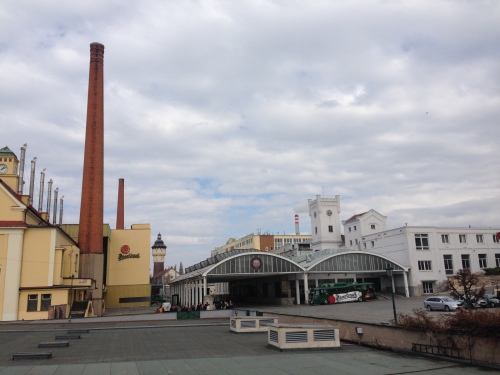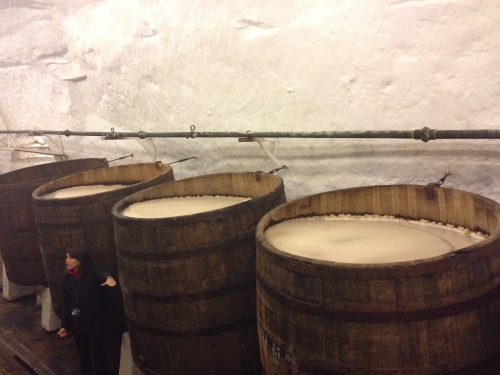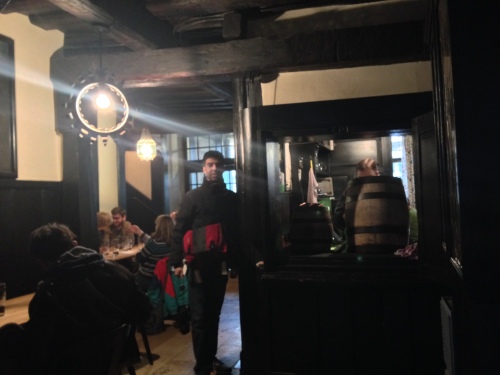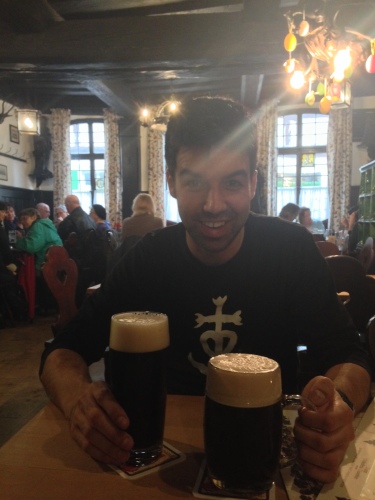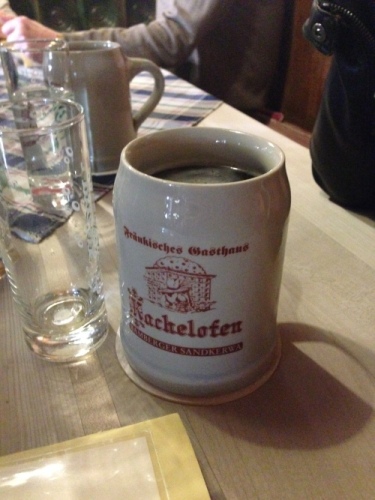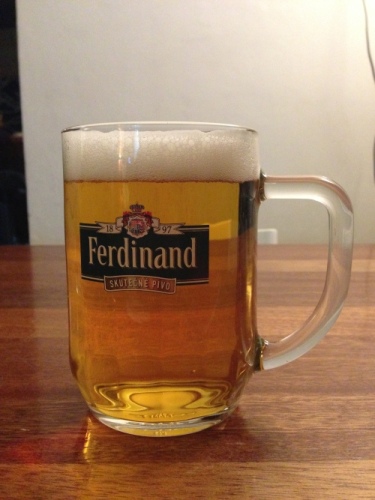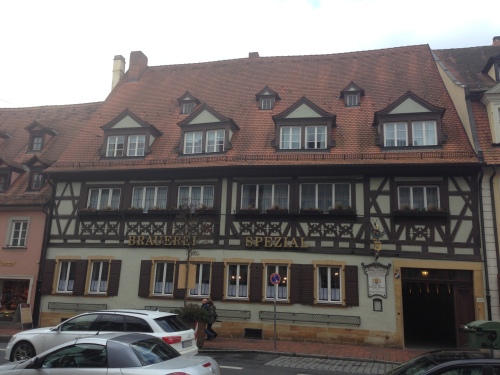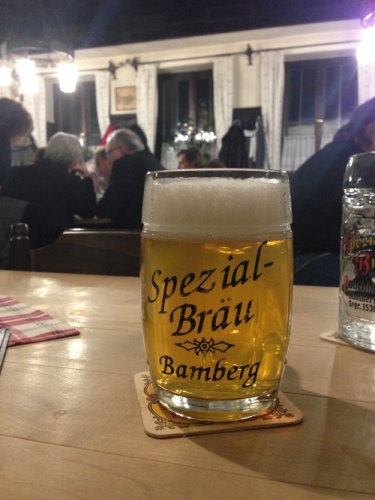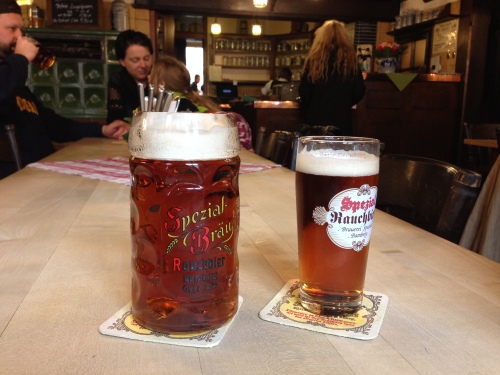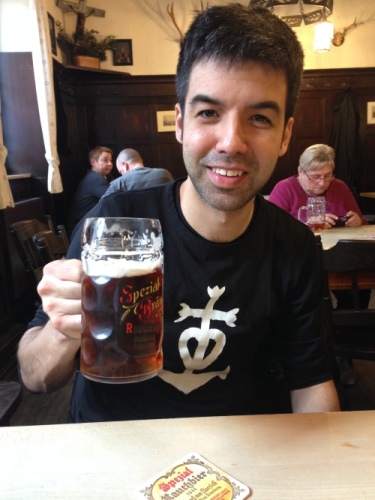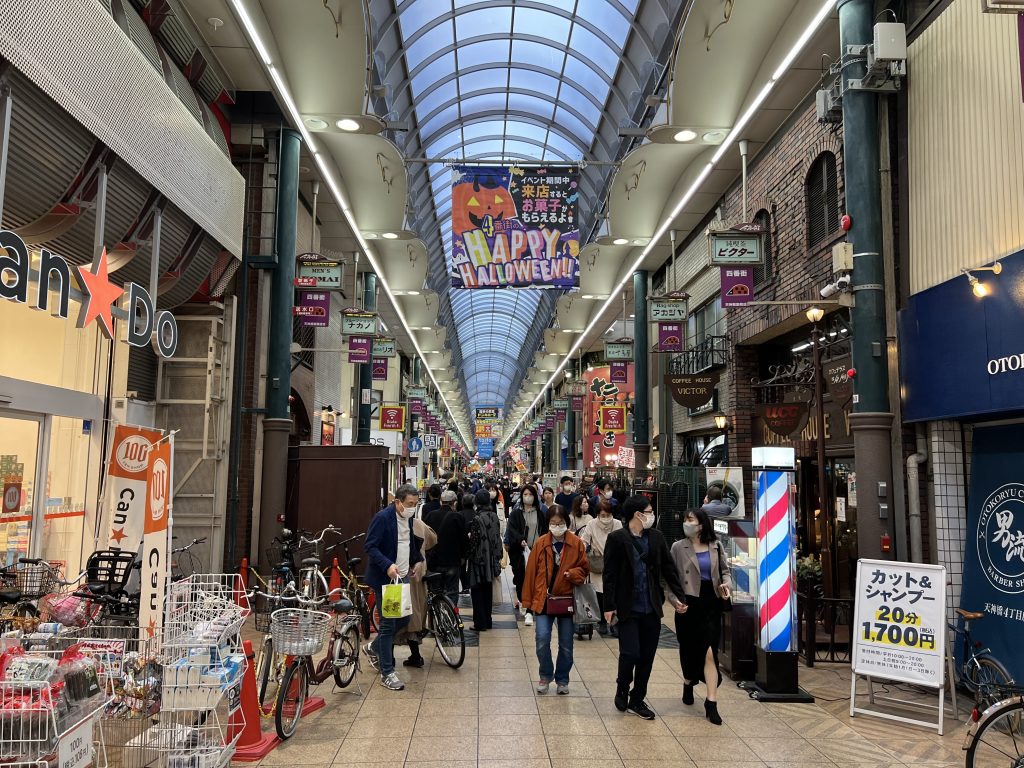
 It’s difficult to recommend places for tourists in Osaka. I’ve tried, but there’s nothing with quite as much “impact” as in Tokyo and Kyoto. Of course there’s Osaka Castle and Dōtonbori, but the castle is a recent reconstruction, and other than the admittedly very picturesque views along the river, the Dōtonbori area is now filled with the same brand shops that tourists can access back home. It’s all a bit manufactured and crowded, even this year’s Expo and other sights such as the aquarium and the retro neighborhood Shinsekai.
It’s difficult to recommend places for tourists in Osaka. I’ve tried, but there’s nothing with quite as much “impact” as in Tokyo and Kyoto. Of course there’s Osaka Castle and Dōtonbori, but the castle is a recent reconstruction, and other than the admittedly very picturesque views along the river, the Dōtonbori area is now filled with the same brand shops that tourists can access back home. It’s all a bit manufactured and crowded, even this year’s Expo and other sights such as the aquarium and the retro neighborhood Shinsekai.
This gets to the heart of the tourism question: What is “impact”? What is worth visiting and what isn’t? How does this get decided?
Craig Mod has an interesting piece of writing that addresses overtourism in Japan, and the underlying premise is that social media (and in particular short-form video) creates targets that tourists feel they must hit in order to achieve “tourism.” If you don’t visit Fushimi Inari, have you even been to Kyoto?
I think that’s part of the charm of Osaka. It defies tourist expectations despite their best efforts. I’m glad that the tourists in Shinsaibashi feel like they’re accessing Japan, but the best parts of Osaka are the parts that people actually live in, not the selfie destinations. Many tourists are missing these neighborhoods completely.
I’ve argued that Osaka is best enjoyed as “matte finish” city, and nothing exemplifies that more than neighborhood 商店街 (shōtengai, shopping arcades). I’m always tempted to translate 商店街 as “covered” shopping arcade until I remember that not all are covered. Some are just a collection of shops along a neighborhood street, organized by a community association with flags or decorated light poles to signal their alliance. However, the best are covered, and they are scattered across the city.
Tokyo has 2,374 registered 商店街, but they are spread across 2,194 square kilometers. Osaka is only 225 square kilometers, a tenth of the size, yet it has 460: The density of 商店街 in Osaka is double that of Tokyo. This confirms my lived experience that you come across shopping arcades in Osaka much more frequently than in Tokyo.
I spent my first week here in August 2022 walking around the city, trying to get a sense of the place and find somewhere to live. I asked for recommendations on Reddit and was directed to Nakazakichō and Temma. Knowing nothing of either, I headed for Nakazakichō only to exit from the Tenroku subway stop and immediately be drawn in by the Tenjinbashi-suji Shōtengai. This is the longest covered shopping arcade in Japan. I specify “covered” here because I’m skeptical of the claims that Asakusa’s Kokusai-dōri, recently recognized as the longest 商店街 in Japan, is covered and connected over its entirety.
Tenjinbashi-suji is remarkable. It starts near the Ōkawa river, a diversion of the Yodogawa, with two uncovered blocks that I would argue still fit the shopping arcade bill. There are cafes, boutiques, and bakeries along this stretch, and during the Tenjin Festival in July it fills with stalls selling skewered meat, okonomiyaki, and other festival foods. From here the arcade is covered and runs north, counting up from the “Ten’ichi” neighborhood (shorthand for Tenjinbashi 1) all the way north to “Tenroku” (Tenjinbashi 6).
The character of the arcade shifts over the run. The area around Osaka Temmangu Shrine close to the river is filled with longtime holdouts like a hardware store, a knife shop, and a number of handsome cafes in addition to newer spots, chain restaurants, chiropractors/acupuncturists, and others. A few blocks north of Minami-Morimachi, the arcade gets slightly quieter with a number of bookstores marking this section as well as an open-air green grocer, before becoming lively again around Ōgi-machi with lots of restaurants, more bakeries, chain pharmacies, kushikatsu and okonomiyaki restaurants, a taiyaki/ice monaka shop, takoyaki vendors, and a well lit gachapon store, which all spill into the JR Temma crowds. The patio outside JR Temma station was previously carts and tables, giving it a very ramshackle feel, but at some point in the last two years the patio was cleared and semi-permanent structures built to house three standing bar/restaurants. After the JR station, the arcade narrows noticeably. There’s a Doutor and an international food store, but also dueling sushi shops (a small restaurant and a Sushiro location), a futon store, other boutiques, a Gusto family restaurant location, and convenience stores. The arcade ends at the subway station which is right next to the Osaka Museum of Housing and Living.
The Guardian recently covered the rise of supermarkets and how these have hollowed out shopping arcades by making business more difficult for individual proprietors. But I’m not sure it’s quite that simple. Supermarkets have long coexisted and even anchored shopping arcades. Tenjinbashi-suji, for example, has several in close proximity. In addition to smaller, konbini-like options along the arcade, there’s a larger Kohyo near Minami-Morimachi and a Hankyu Oasis at the northern terminal. There are even the bright neon lights of the Osaka chain Tamade right on the arcade just south of JR Temma.
I think it’s more likely that shopping arcades have delicate and intricate ecosystems much like rainforests. Larger entities such as stations, major cultural institutions (shrines, museums, etc.), offices, residences, pachinko parlors, and even chain stores like supermarkets form the larger trees that funnel traffic to the smaller businesses on the arcade. If any of these pieces are significantly dislodged or absent to begin with, the long-term health of the whole ecosystem is at risk.
Suburban America lacked the transportation infrastructure to incorporate shopping malls naturally within residential areas, and thus malls were vulnerable to the boom in online shopping. (This has given us the excellent mallchitecture.com.) In Japan, many people will walk through a shopping arcade as part of their daily life. Going to the mall back home was always an event. Going to the shopping arcade can be the same thing as going to school or going to work. There are even apartment buildings built directly into shopping arcades in Japan, including ones as large as Tenjinbashi-suji.
Many shopping arcades have seen better times. When I was looking for new apartments in 2023, I came across Inari Shōtengai near Kamishinjō Station, one of the local stops on the Hankyu Line out to Kyoto. At just two short blocks in length, Inari is very much the polar opposite of Tenjinbashi-suji. The plastic roofing is torn and shredded, hanging down from the skeleton girding of the arched roof. There is a cafe and an izakaya, a men’s clothing store that may be permanently shuttered, and one of the stalls has been converted into monthly bike parking. Apartments surround the arcade, so people pass through, but there are not enough of the major economic pillars that would drive people there in large enough numbers to sustain the covered arcade.
Another less extreme example might be Sekime Shōtengai. Sekime is a dim, three-block covered arcade near Sekime Station on the Keihan Line to Kyoto. Like Inari, it has the foot traffic from transportation and residential buildings in neighboring blocks, but it also has an Appro supermarket on the arcade. Perhaps this is why there are a handful of stores both on the arcade and in the immediate blocks before and after that seem to be surviving if not thriving. There’s a open-air green grocer, a takoyaki grill, a coffee and curry restaurant, and a handful of izakaya. Nearby but not right on the arcade, there are a 駄菓子屋 (dagashiya, traditional Japanese candy store), a patisserie, and a number of restaurants.
I’d be hesitant to recommend that tourists visit Sekime Shōtengai, but at the same time, I do think they’d be getting a much more authentically Japanese experience than visiting Dōtonbori. In the end, I guess it really depends on the tourist. If you’re looking for an immediate caffeine rush, then 商店街 may not be the right tourist destination for you. Surrounded by other tourists at Kiyomizu-dera, there’s easy confirmation that you’re in the right spot; the temple is massive, the crowds provide reassurance, and there are any number of polished treats, both edible and inedible, to further stoke the sensation. But if you’re fine with a dull ache instead, that at-times-impossible-to-pinpoint, ASMR-like recognition that you are amongst the gritty reality of another place, then Osaka may be the city for you.
Tenjinbashi-suji may have the most “impact,” but plenty of Osaka’s shopping arcades are worth a visit. Spend an afternoon walking around Fuse Shōtengai or Sembayashi Shōtengai. Go get breakfast on Sky Dome Kosaka Hon-dōri Shōtengai before checking out the beautiful Shiba Ryōtarō Memorial Museum designed by Ando Tadao. Or grab a beer and Korean food on Tsuruhashi Shōtengai. These may require more work to pry open, but the pearls you’ll find inside will be more than worth the effort even if they aren’t exactly the color you expect them to be.
